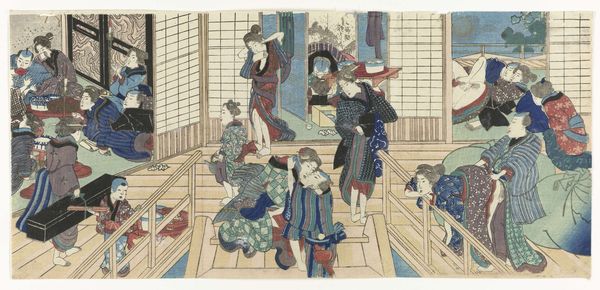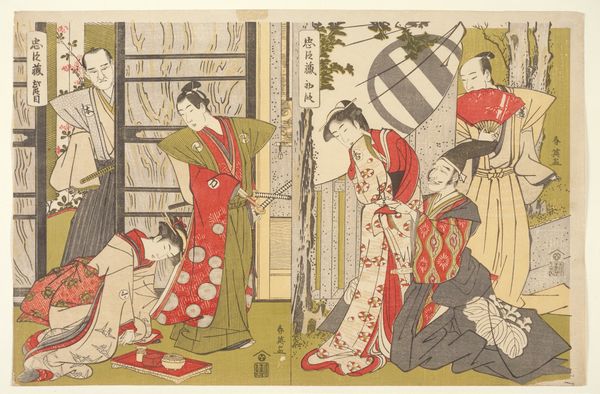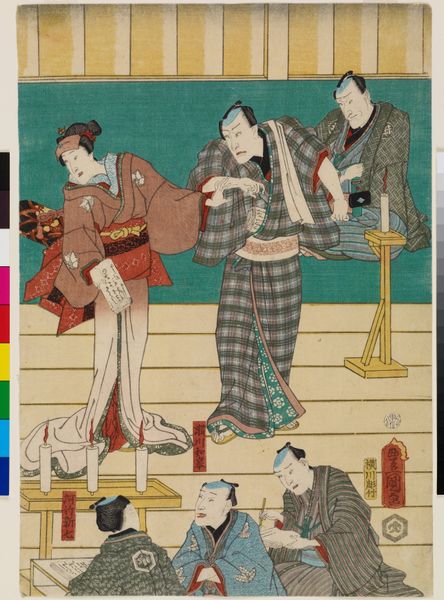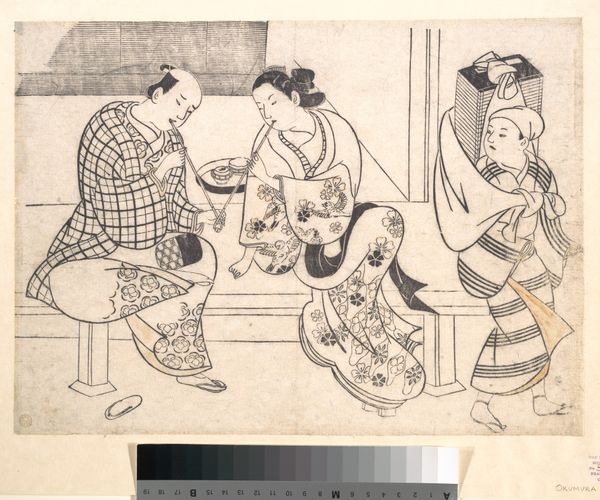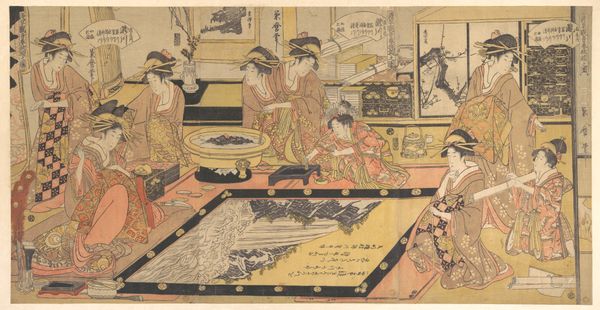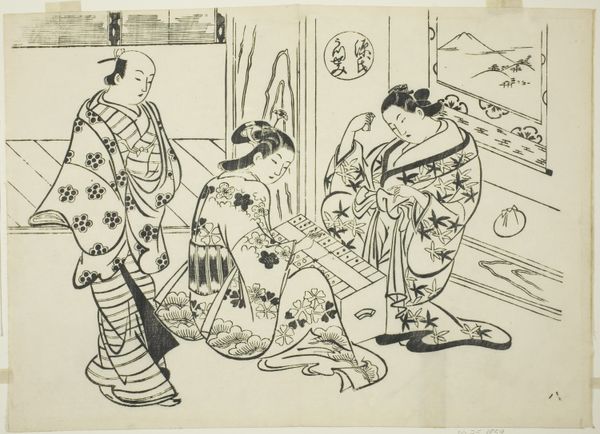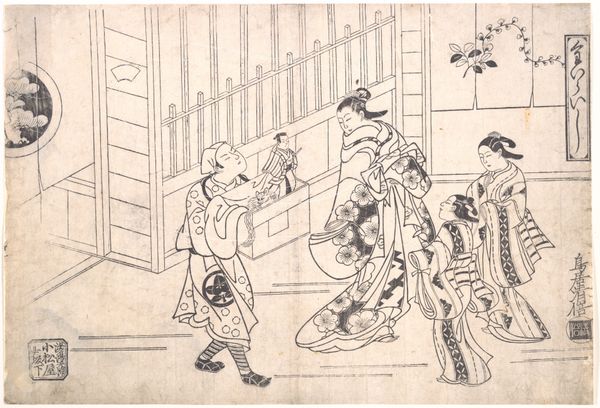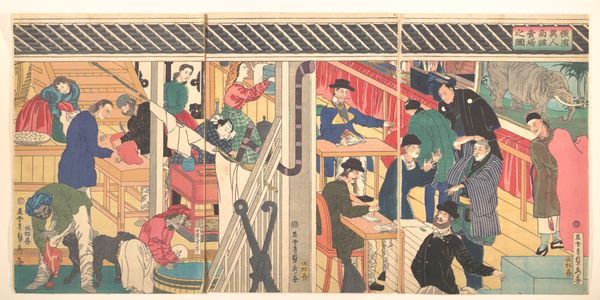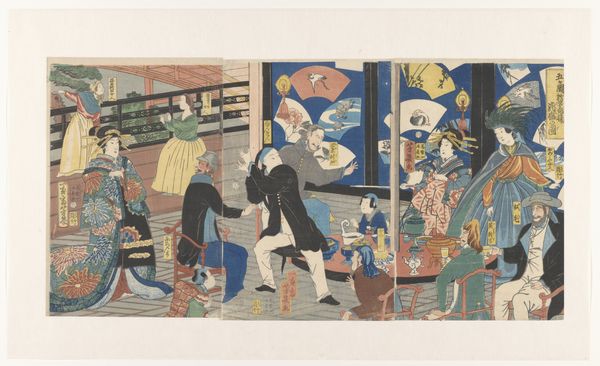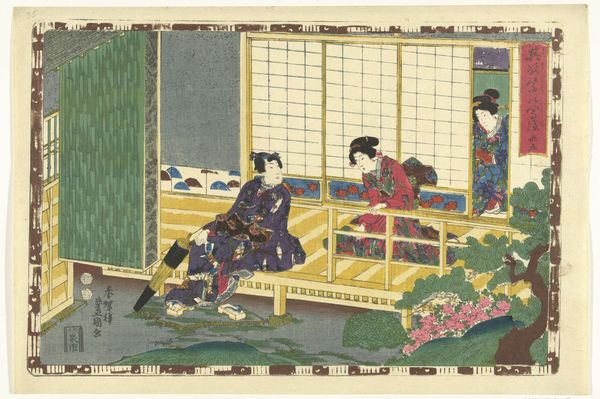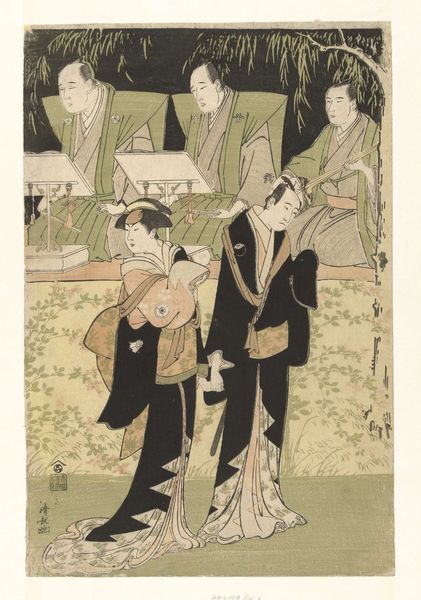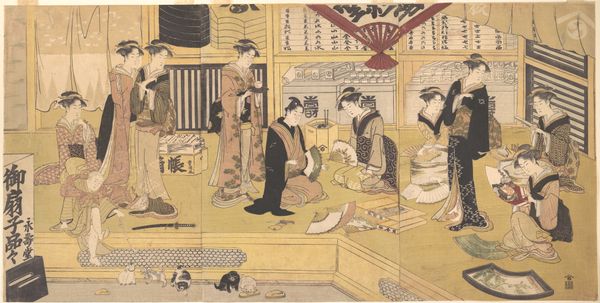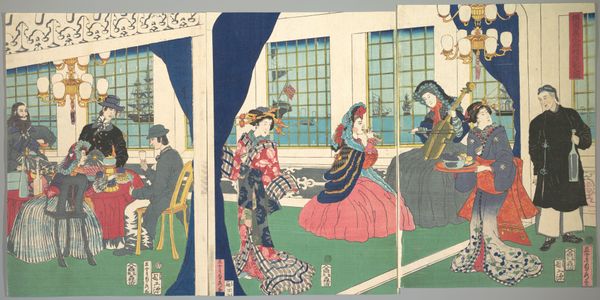
Bellflowers (Asagao), from the series Genji in Fashionable Modern Guise (Fūryū yatsushi Genji: Asagao) 1789 - 1792
0:00
0:00
#
portrait
# print
#
asian-art
#
ukiyo-e
#
figuration
#
genre-painting
Dimensions: a: H. 14 7/8 in. (37.8 cm); W. 9 7/8 in. (25.1 cm); b: H. 14 7/8 in. (37.8 cm); W. 9 3/4 in. (24.8 cm); c: H. 15 in. (38.1 cm); W. 10 in. (25.4 cm)
Copyright: Public Domain
Editor: This woodblock print, “Bellflowers (Asagao), from the series Genji in Fashionable Modern Guise” by Chōbunsai Eishi, dating from 1789-1792, portrays a scene of elegant leisure. It’s so intricate and detailed, depicting many figures within an interior space. What kind of cultural narratives do you think it evokes? Curator: Consider the bellflowers themselves. In Japanese iconography, the morning glory, or "asagao," suggests fleeting beauty, a symbol laden with nostalgia for past love and perhaps a hint of melancholy. Do you see that reflected in the arrangement of the figures, their interactions? Editor: Yes, I notice their subtle gestures and expressions. There's a sense of refined sadness, almost as if they’re aware of the transience of their enjoyment. Curator: Exactly! This belongs to the ukiyo-e genre. And ukiyo-e often depicts the ephemeral pleasures of the floating world, yet layered into these works is a profound cultural understanding of impermanence. Are you familiar with the Genji monogatari? Editor: I've heard of the *Tale of Genji*... it’s a classic of Japanese literature, right? Curator: Precisely. This print reimagines the Genji within a contemporary context, melding classical literary themes with the transient fashions of the Edo period. It’s a reinterpretation that underscores how stories evolve, constantly mirroring and shaping our understanding of society and its values. So, think of this scene not merely as a representation, but as a layered narrative. Editor: That’s fascinating. The print then becomes a mirror reflecting both a timeless story and the present moment in which it was created. Curator: Indeed. Symbols provide us a bridge from past to present. What do you take away now? Editor: I’m really struck by how a seemingly simple genre painting holds such complex layers of cultural meaning. I will now examine other Ukiyo-e with more attention!
Comments
No comments
Be the first to comment and join the conversation on the ultimate creative platform.
